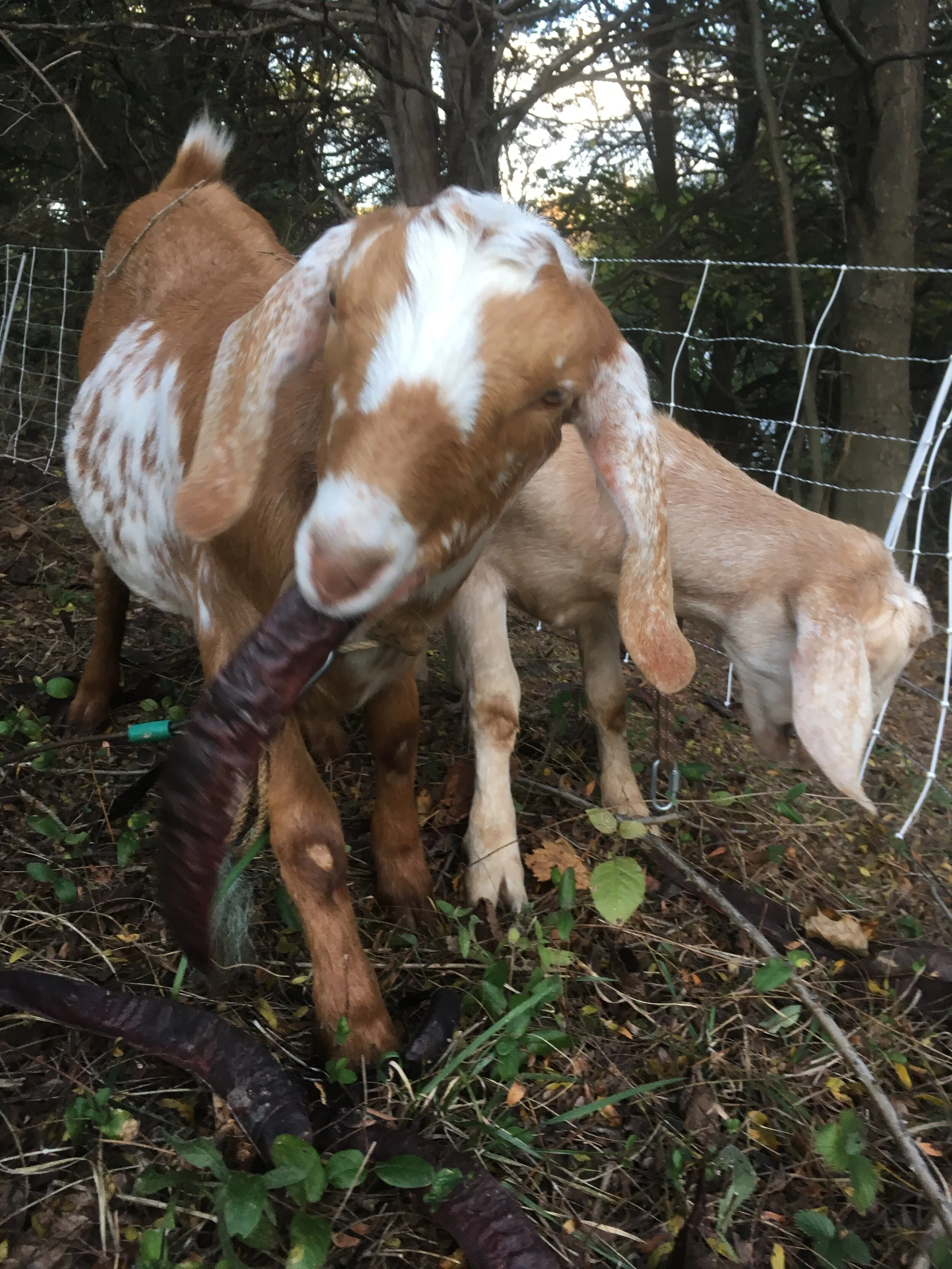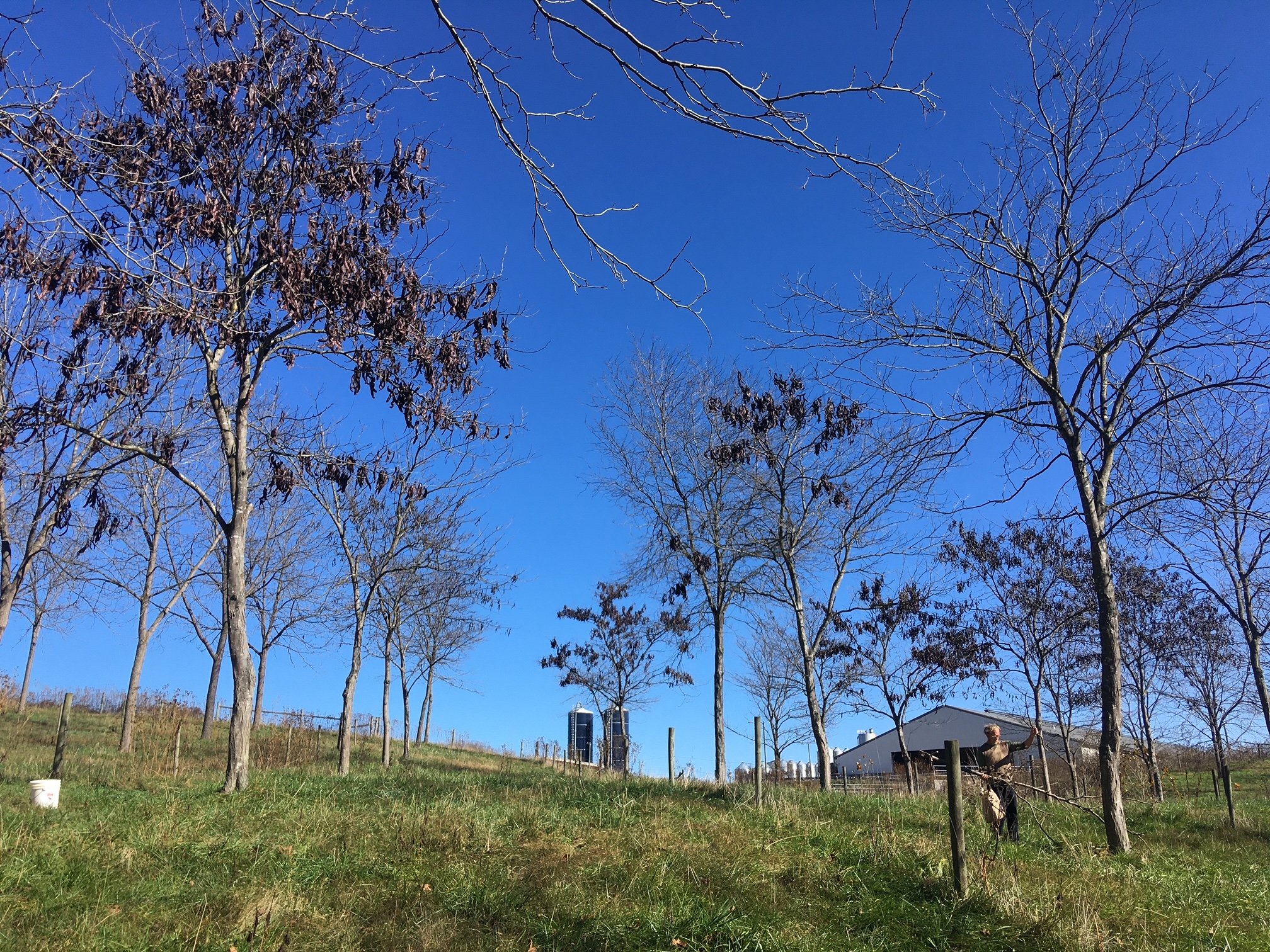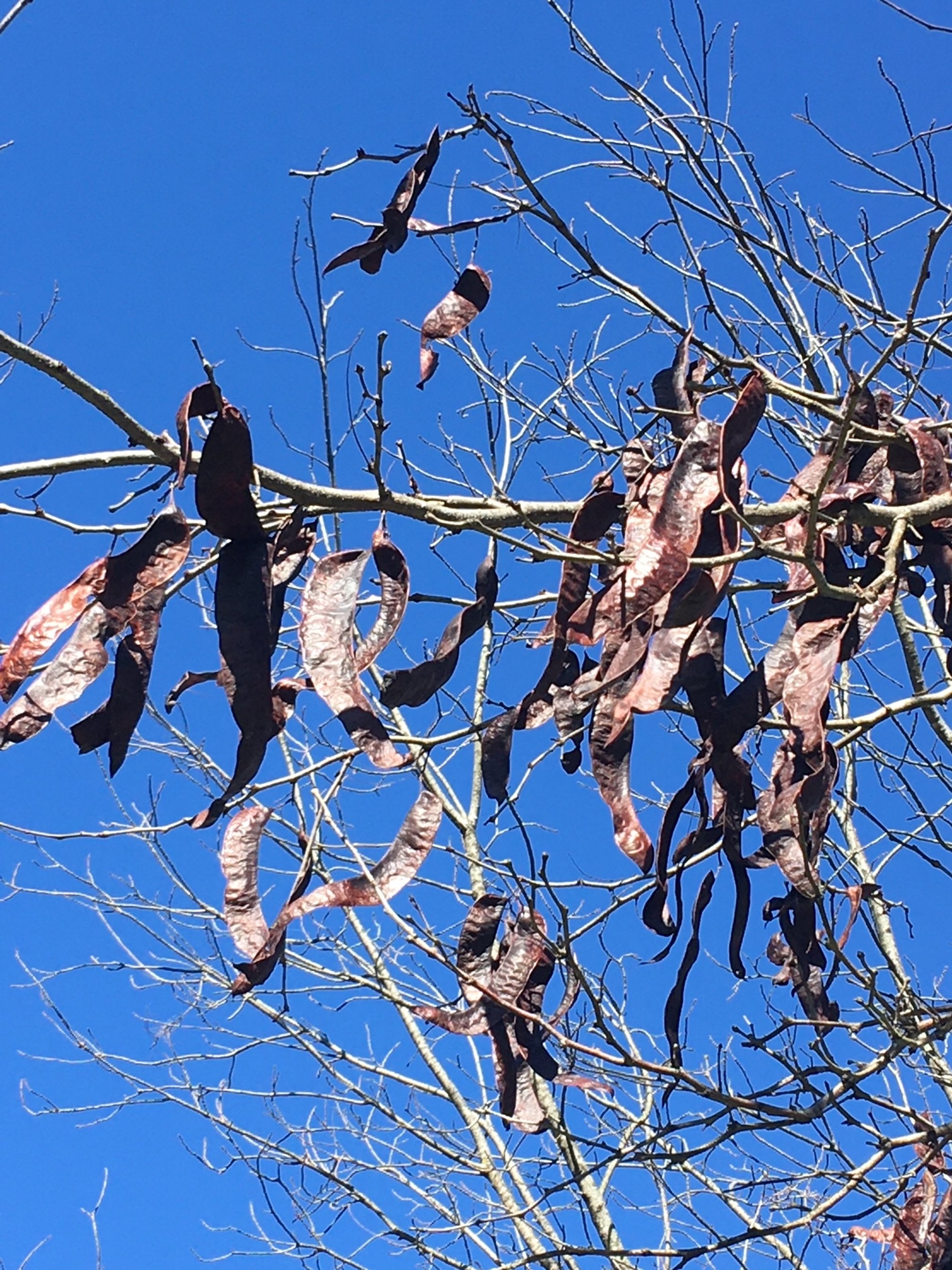Honey Locust







Honey Locust
Gleditsia triacanthos var. inermis
Plant for the fast growth, for the sweet beans and biomass in silvopastures, for the gorgeous wood in the climates of corn and cotton, and a cultivation legacy of mutual aid!
Hardy from Zones 4-9. 60-90 feet tall, 30 feet wide.
Aw, honey-shucks, we sure do like Honey Locust! Also known as Honey-Shucks, Sweet Locust, Sweet-bean, Thorn Tree, Thorny Locust, and Three-Thorned Acacia. As you might guess, they usually have thorns, and really big ones, all over the dark gray bark! People sell them as decoration on Etsy, but once upon a time they were used as nails and might’ve evolved to protect the tree from large browsing animals like mammoths, so Honey Locust has been around a little while. Thorny thickets provide safe habitat for critters, but lots of industrial farmers consider them a painful weed tree because thorny root suckers can pop tractor tires or fence livestock away from water.
But don’t rule Honey Locust out just yet! There’s a thornless variety, which is what we’re (mostly) growing in our nursery. However, some seedlings will sprout red thorns because thornlessness is a recessive gene that can reexpress itself when the trees are propagated from seed. Honey Locust is very commonly planted as an ornamental tree in parking lots and sidewalks. The wood is dense, shock-resistant, straight, and easily split for fence posts and firewood. Some say they also coppice well to produce loads of biomass from pea-like leaves that turn golden yellow in the fall. Honey Locust is in the Bean Family, but they’re supposedly not a nitrogen-fixer, though lots of people claim they aid the growth of companion plants. Either way, we’re excited about Honey Locust because of the beans, or more accurately, the pods that can grow over a foot long! Those pods, not the strong-smelling flowers, are what gives Honey Locust the name. The pods are filled with sweet green gooey pulp and nutrition comparable to oats and barley after they’ve dried and dropped down maroon-red and brown in Autumn. Deer, squirrel, rabbits, racoons, and hogs all love eating those pods, thereby propagating the tree through scarification, or breaking the seed coat, in their digestive tracts. A little manure fertilizer also helps speed up germination. Sheep, cows, and goats also enjoy munching on the pods, making Honey Locust a wonderful healthy candidate for silvopasture! They provide dappled shade and nutritious feed in pasture, and thick deep roots build soil. In his classic 1929 Tree Crops: A Permanent Agriculture, J. Russell Smith reported on rural children eating the pulp and the potential of Honey Locust as a stock-food tree “in the climates of corn and cotton,” a cousin to Carob.
Smith wasn’t the first to imagine Honey Locust as human food. Honey Locust is native to salty soils of rocky uplands, but strangely they often grow in green river valleys and streambanks of the South. That adaptation recently caught the attention of an ecologist named Robert Warren, living in the Appalachian Mountains of North Carolina. He said that “every time I saw a honey locust, I could throw a rock and hit an archaeological site.” Maybe, he thought, species are just as dependent on mutual aid as on specific habitats. That led to a hypothesis: Honey Locust grows most commonly near historic Cherokee communities rather than in their evolved ecological niche. Warren got permission from the Eastern Band of Cherokee to survey tribal land, as well as national forests and private land. Warren found that, rather than streams and the stomachs of animals, Honey Locust is largely a cultivation legacy of the Cherokee, who grew this sacred tree for medicine and culinary sugar. Excavations of enslaved quarters in North Carolina found abundant Honey Locust seeds, more than any other plant remnants, most likely used as sweetener in a survival strategy of mixed foraging and horticulture.
We propagate our Honey Locust from seed we collect from a cultivar called Millwood, so-named because of whose farm they came from in Lake Junaluska, North Carolina, which is right near a town called Cherokee. Millwood is undoubtedly evidence of that cultivation legacy. Millwood pods are lamost one third sugar by dry weight and packed with protein. We scarify the seeds by boiling water, turning off the heat, and steeping the seeds for a day or two until they plump up and are ready to plant! Keep in mind that seedlings won’t exactly be true to type, but the results of sexual reproduction never are. Honey Locust is polygamodioecious: most trees have either male or female flowers, but some trees have perfect flowers with both male and female parts.